Fostering Resilience in Northern Central America

By FP Analytics, the independent research division of Foreign Policy magazine, in partnership with World Vision and the World Bank
September 2021
[Leer este informe de síntesis en español.]
FP Simulations are scenario-based, interactive programs that offer participants a chance to address the challenges of crisis management, diplomacy, and peacebuilding with the same creativity and focus that have traditionally been devoted to war games. On July 16, 2021, the Fostering Resilience in Northern Central America Crisis Simulation brought together global and regional leaders and experts from government, the private sector, academia, and civil society to grapple with the complex political, socio-economic, and environmental factors driving forced migration from three Central American countries—El Salvador, Guatemala, and Honduras. While Foreign Policy (FP) has a long history producing simulations and PeaceGames, this was the first simulation intently focused on resilience and capacity-building as means to address complex risks and fragility, adaptively manage crises, and safeguard lives and livelihoods. Following the July simulation, FP hosted the Virtual Dialogue: Fostering Resilience in Northern Central America to examine the insights and recommendations generated from the simulation. The program was developed by FP Analytics, Foreign Policy’s in-house research division, in partnership with World Vision U.S. and the World Bank.
The Simulation
The scenario was developed through in-depth research and incorporated a range of complex risks contributing to forced migration from El Salvador, Guatemala, and Honduras, including climate-related environmental disasters, further mutation and spread of COVID-19, worsening economic conditions, femicides, and escalating rates of transnational violence. The simulation focused on identifying and mitigating the root causes of forced migration, which consists of a “migratory movement which, although the drivers can be diverse, involves force, compulsion, or coercion.”1 Forced migration is distinct from regular (or orderly) migration, which “occurs in compliance with the laws of the country of origin, transit, and destination.”2
Like all FP Simulations, this program was designed to facilitate a dynamic level of engagement among diverse stakeholders, with the scenario compelling participants to identify allies and work toward cooperative frameworks to manage immediate crises and foster durable, long-term economic growth. These simulations provide a “safe space” to consider new alliances, coalitions, and conversations across silos and political interests, and aim to reveal possible contingency plans that draw from a diverse pool of expertise, worldviews, and organizational vantage points. Participants were asked to utilize a resilience and adaptive management framework to address these intersecting security, governance, developmental, and humanitarian challenges.
Participants in the July simulation included representatives from governments and international organizations, subject matter experts, and members of civil society from across the region and globally. The participants were assigned and took on the roles of varying stakeholder groups, including Honduras, El Salvador, Guatemala, the United States, Mexico, Multilateral Development Banks, International Organizations, the private sector, youth and children, and a range of non-governmental, civil society, and faith-based organizations. These roles were included in the simulation given their relevance, level of influence, and distinct capacity to build resilience in the region. Participants were assigned roles that were different from their professional jobs and affiliations, challenging them to think through these issues from another perspective and identify innovative solutions and partnerships that may have eluded them to date.
The Virtual Dialogue
Following the closed-door simulation, FP convened a virtual dialogue on July 22, 2021, that brought together leaders and experts from government, the private sector, and civil society to discuss the range of complex risks and fragility factors in the region and how these various stakeholders are working to build local capacity, foster multidimensional resilience, and stem forced migration. Speakers explored the policies, funding, and partnerships necessary to build resilience in northern Central America, and reflected on the insights and takeaways of the simulation. Moderated by FP Analytics’ managing director Allison Carlson, the virtual dialogue’s speakers included:
- João Diniz, Regional Leader for Latin America and the Caribbean, World Vision International;
- Mileydi Guilarte, Deputy Assistant Administrator for the Bureau for Latin America and the Caribbean, USAID;
- Ricardo Pareja, Head of Sales and Market Development for the Humanitarian & Development Group, Mastercard;
- Edgar Sandoval, President and CEO, World Vision U.S.;
- Luis Suazo, Ambassador of Honduras to the U.S.; and
- Ricardo Zúñiga, Special Envoy for the Northern Triangle, U.S. Department of State.
Participants and speakers conveyed that deterring forced migration will require solutions that raise the capacities of states, the private sector, civil society, and communities to better prevent and absorb major shocks and stress, to positively adapt in the face of changing political, social, economic, and environmental changes. Further, institutions and systems will need to be transformed to address the root causes of crises and stress in the region. Building cross-sector collaboration within the country and at the subregional level are key to strengthening the local capacities that can more effectively manage transnational and compounding risks.
Addressing Regional Challenges Through a Resilience Framework
Deteriorating socio-economic and security conditions, exacerbated by frequent natural disasters and country governance challenges, among other destabilizing factors, have driven millions of people from El Salvador, Honduras, and Guatemala to leave their homes in search of greater stability and prosperity. In 2019, these countries accounted for nearly 50 percent of defensive asylum applicants in the U.S., generating an estimated 500,000 refugees globally and another 250,000 internally displaced people.34 As the pandemic continues into 2021, migrants are arriving at the U.S.-Mexico border in record numbers. In April 2021, a record 112,000 single adult migrants, arriving predominantly from northern Central America, were taken into custody.5 This trend continued to accelerate in the following months. In July 2021, 210,000 migrants crossed the U.S.’s southern border, the highest number recorded in the last 21 years.6
Despite successive efforts, governmental and non-governmental efforts are not currently reaching the expected outcomes in addressing the region’s challenges. Development efforts by international actors have likewise failed to adequately address the root causes of forced migration. Relief and development approaches have long focused on meeting basic human needs, promoting economic growth and good governance, but insufficient attention has been paid to the underlying causes of fragility, which produce a wide range of overlapping risks, including those that are related to political, social, economic, environmental, and security dimensions. The simulation and dialogue sought to contribute to an emerging “fragility to resilience” paradigm shift focused on better managing complex risks and crises that disrupt peace and development, a trend that is being increasingly discussed among policymakers and gaining traction in the development community.7 The shift to a resilience framework is focused on making complex and compounding risks more visible and fostering greater coping capacities by states and societies as well as international partners to build resilience in the face of fragility. The simulation’s top objective was to foster new ways of thinking and working in the region in order to deepen analysis, collaboration, and insight on resilience solutions.
Themes
The scenario outlined a series of possible events that, if triggered, could exacerbate the political, economic, and humanitarian crisis throughout the region. Although this scenario was fictitious, it was crafted considering known and ongoing vulnerabilities to El Salvador, Guatemala, and Honduras and designed to compel participants to think through how they would respond should such events occur. Several key themes were explored during the scenario, including:
1. Environmental Fragility: Guatemala, Honduras, and El Salvador are particularly vulnerable to the effects of climate change as well as certain natural hazards, including drought, hurricanes, and earthquakes.8 As temperatures rise, the number of extreme weather events in the region such as droughts and hurricanes is projected to increase.9 Climate change’s impact on temperature and wildlife habitat may also have significant health effects for the three Central American countries, including a potential increase in infectious diseases. These health effects will disproportionately impact highly vulnerable populations such as children, women, the elderly, and water-insecure people. To reflect ongoing environmental risks in the region, participants were confronted with the after-effects of a hurricane, a drought impacting the Dry Corridor, and a new variant of COVID-19.
2. Security and Social Fragility: The three countries have long struggled with chronic violence. Decades of civil war and political instability weakened state security structures, enabling the rise of transnational gangs, such as Mara Salvatrucha (MS-13) and the Eighteenth Street Gang (Barrio 18). Homicide rates and rates of youth violence in the region were among the world’s highest a decade ago.10 While homicide rates have been trending downward over the last few years,11 rates of gender-based violence remain some of the highest in Latin America, and lockdowns to prevent the spread of COVID-19 have further exacerbated violence against women and children in the region, further fueling forced migration.12 This scenario explicitly encompassed this threat with the inclusion of new transnational criminal organization and escalating rates of violence against women, children, and LGBTQI people.
3. Political and Institutional Fragility: Weak institutional capacity and rule of law, along with other governance challenges, protests and political unrest are deep-rooted issues for the region, stemming from decades of civil war and instability in the 20th century.13 The 2020 Corruption Perceptions Index from Transparency International determined that all three countries are in the bottom half of the 180 countries surveyed.14 Inequality, impunity, and poverty have all grown during the COVID-19 pandemic and have pushed some people to migrate in search of more stable conditions and opportunities, with these factors reflected in the simulation.15
4. Economic and Social Fragility: Honduras, Guatemala, and El Salvador are among the poorest in the Western Hemisphere, ranked below most other Latin American and Caribbean states in terms of gross domestic product (GDP) per capita.16 Due to a large informal sector and economic insecurity, many households are dependent on remittances from abroad, which accounted for nearly 21 percent of the countries’ GDP in 2020, on average.1718 Though remittance-giving has since rebounded, these payments sharply fell during the early months of the pandemic.19 This initial drop in remittances left many households without a safety net when restrictions to contain the COVID-19 pandemic crushed economic activity, particularly in the large informal sectors.20 To keep economies afloat, governments borrowed heavily to support social and health services, and aid delivery was insufficient, partly due to institutional weaknesses.21 Growing levels of poverty during the pandemic, alongside recurring environmental crises, have exacerbated food insecurity and chronic malnutrition throughout the region.22 For example, high rates of poverty and frequent drought in Guatemala have left nearly half the population unable to afford basic food staples, resulting in the stunting of nearly half of the country’s children under the age of five.23 During the scenario, participants were challenged to address a range of economic and social vulnerabilities, including livelihood loss, poverty, food insecurity, deficient telecommunication and transit infrastructure, debt vulnerability, and limited access to health services.
5. The Role of U.S. Engagement: Over the past two decades, the United States has engaged with Honduras, Guatemala, and El Salvador through foreign assistance and immigration policy to manage irregular flows of migration. The three countries have been significantly affected by these policies, which have changed under each administration. The simulation underscored the need to understand the risks and unintended consequences of external engagements, while continuing to build on the importance of international investments and aid assistance. The simulation and dialogue explored avenues for constructive engagement and information and data-sharing with regional and local entities and how the U.S. can more effectively collaborate and support locally driven capacity-building.
The Resilience Framework
The continuous multidimensional and dynamic risks described above threaten Central Americans lives and livelihoods. To respond to these risks, simulation participants and speakers participating in the dialogue were encouraged to think through these issues and their proposed solutions in the context of a resilience framework. Resilience is the capacity of a state, society, or system to absorb, adapt, and/or transform in the face of shocks or stress. It requires actors to strengthen the capacities and resources of a system to cope with risks, their root causes, and ensuing crises. This resilience framework can be broken down into three types of capacities:
1. Absorptive Capacity, which is the ability to take protective actions to cope with known shocks and stresses. These include actions taken to anticipate, prevent, mitigate, and absorb specific shocks (such as disasters, conflict, and rapid price fluctuations) or mounting stress (including large-scale unemployment, high sovereign debt, and demographic pressures).
2. Adaptive Capacity, which involves the ability to make intentional adjustments in anticipation of or in response to changing conditions. Interventions to support adaptive capacity seek to improve the flexibility, foresight, and learning of states, systems, households, and communities to adopt positive adaptive strategies in response to longer-term social, economic, and environmental change rather than negative adaptive “last resort” practices, such as irregular migration or meal-skipping.
3. Transformative Capacity, which refers to the capacity to make fundamental changes to address the structural or root causes of risks and vulnerabilities. Transformative capacity involves reforms within governance mechanisms, policies, regulations, infrastructure, community networks, and/or social protection mechanisms.
World Vision has developed a resilience framework for the region based on the organization’s forty years of operations and close working relationships with communities, civil society, the private sector, and public institutions. The framework identifies the multiple fragilities and risks facing the region but also identifies resources for resilience within society, institutions, communities, families, and individuals that can be strengthened through wider-stakeholder partnerships, cross-sector collaborations, and investments. The scenario used this resilience framework to prompt dialogue among participants on entry points for action.
Central American Resilience
World Vision’s framework to address the root causes of forced migration in the Northern Triangle
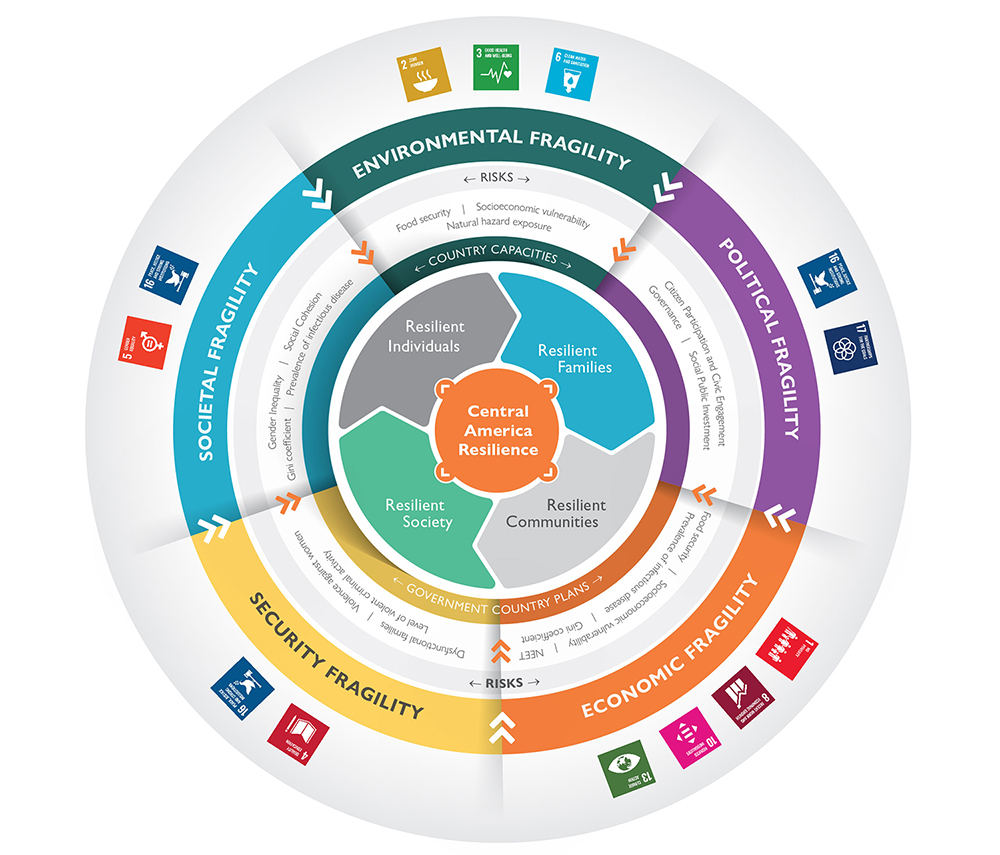
SOURCE: WORLD VISION, 2021
Simulation Summary
The simulation began with a “scene-setter,” which described the environment in which the scenario’s events unfolded. The simulation was structured around three “moves,” each requiring a response or action from participants. After each move, participants broke away from the full group to formulate responses with their team or with other teams (e.g., establishing an alliance or brokering a deal with another team). These consultations were followed by a reflection session guided by the moderator, FP’s editor-in-chief Ravi Agrawal, as well as insights from an expert panel and a group discussion to draw conclusions based on the outcome of the role play. The expert panels encouraged participants to address each move by considering the resilience framework.
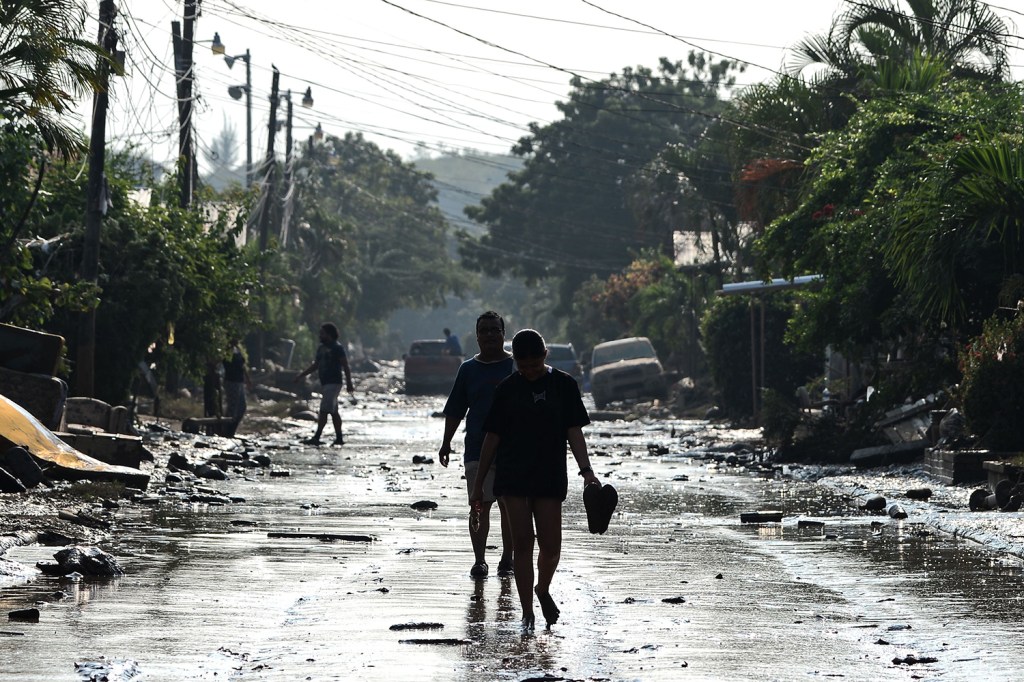
Scene Setter–The Aftermath of a Hurricane
The scene begins in the aftermath of a devastating Category 4 hurricane, which made landfall near San Pedro Sula in Honduras and Puerto Barrios and Lago de Izabal in Guatemala. Hurricane Miranda and its after-effects killed 4,200 people across both countries, resulted in widespread internal displacement, and wiped out critical infrastructure and crops. Hundreds of thousands have sought emergency assistance, and nearly 20,000 people have been left homeless. Capitalizing on the devastation and destabilization across the region following the hurricane, a new Nicaraguan criminal enterprise, or mara, called Las Serpientes, expands its network into El Salvador, Guatemala, and Honduras. Las Serpientesserves as an intermediary in drug and arms trafficking from South America to North America and Europe. Throughout the region, tensions and gang competition have increased, contributing to a sharp escalation in extortion, kidnappings, and random acts of violence on civilians. Instability and insecurity have been driving migrants from rural areas toward cities within the region for months.
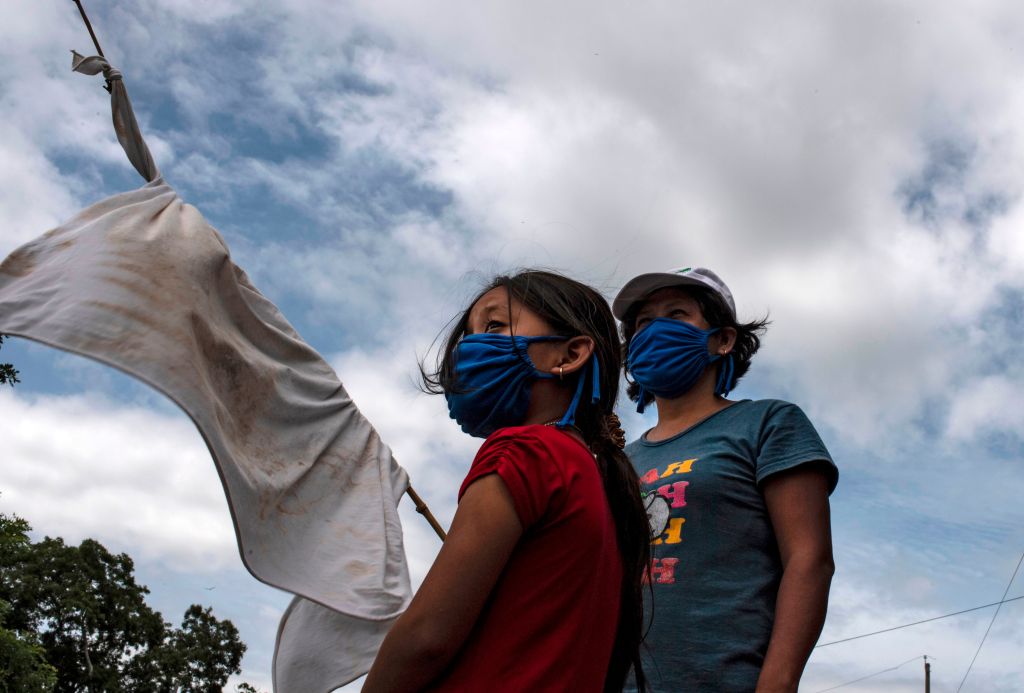
Move 1—Drought in the Dry Corridor and a New COVID-19 Variant
A season after the hurricanes, a drought devastates the Dry Corridor, which spans the three countries. The drought wiped out agricultural production, devastating farmers’ livelihoods and placing thousands of young children at risk of severe malnutrition. As the region struggles to manage the drought, a highly infectious COVID-19 variant spreads quickly throughout Central America. Central American governments reinstate lockdown measures to contain the new strain, forcing businesses and schools to close. The compounding effects of the drought and the pandemic have led to widespread food insecurity. As a result, internal displacement and migration to the United States and Mexico rapidly increase, as people become unable to feed their families or find work due to the drought and COVID-19.
Participants’ Responses
Following the scene-setter and initial move, several themes emerged. Delegates from El Salvador, Guatemala, and Honduras called for enhanced regional security and intelligence cooperation. The governments called upon the United States and Mexico to assist and fund more formalized regional cooperation, including a Criminal Intelligence Sharing Center. Mexico and the United States, however, prioritized improved border security over regional security cooperation, though both countries did offer to continue working with the three regional governments to address trafficking and smuggling issues.
While states focused primarily on security concerns, international organizations and non-governmental organizations sought to address humanitarian, health, and climate change issues facing the region. To prevent the spread of COVID-19, delegates from the Health Coalition and Multilateral Development Banks suggested partnering with national and local governments as well as other strategic partners to help distribute information, vaccines, and medical supplies. Several actions to improve climate change resilience in the region were also recommended by Multilateral Development Banks, including the deployment of climate change insurance, water harvesting and small storage technologies, and technical assistance in agriculture and infrastructure.
Other participants, including teams representing the Private Sector, Disaster Relief and Risk Reduction, and Environmental and Food Security Coalitions turned to drought and hurricane recovery efforts, prioritizing coordinating investments in infrastructure and food security. Recommendations included investments in watershed management and restoration, restoring value chains in the Dry Corridor, micro-insurance, and green energy projects. To improve current and future responses to humanitarian emergencies, participants called for formation of an “emergency logistics cluster,” which would bring together local stakeholders, governments, United Nations humanitarian organizations, and NGOs to strengthen preparedness and technical capacity to respond to humanitarian emergencies. Participants from the Private Sector Coalition also promoted their sectors’ unique competency in logistics, data analytics, and distribution, which could be better utilized by regional governments during future humanitarian responses to crises and development planning.
Advisory Panel Responses
The advisory panel urged participants to consider how shocks and stressors from the scene setter and first move could disrupt suggested policies or programs. The panelists noted that policies can create new, unintentional risks in the region; for example, they noted that cash transfer programs or private-sector investment might further issues of corruption and elite capture on the ground. Panelists also emphasized that already-vulnerable populations are the most exposed when interconnected, mutually reinforcing crises occur. Since vulnerable populations tend to be invisible to aid or legal and social protections, panelists encouraged participants to keep individual risk at the forefront when planning their next actions.
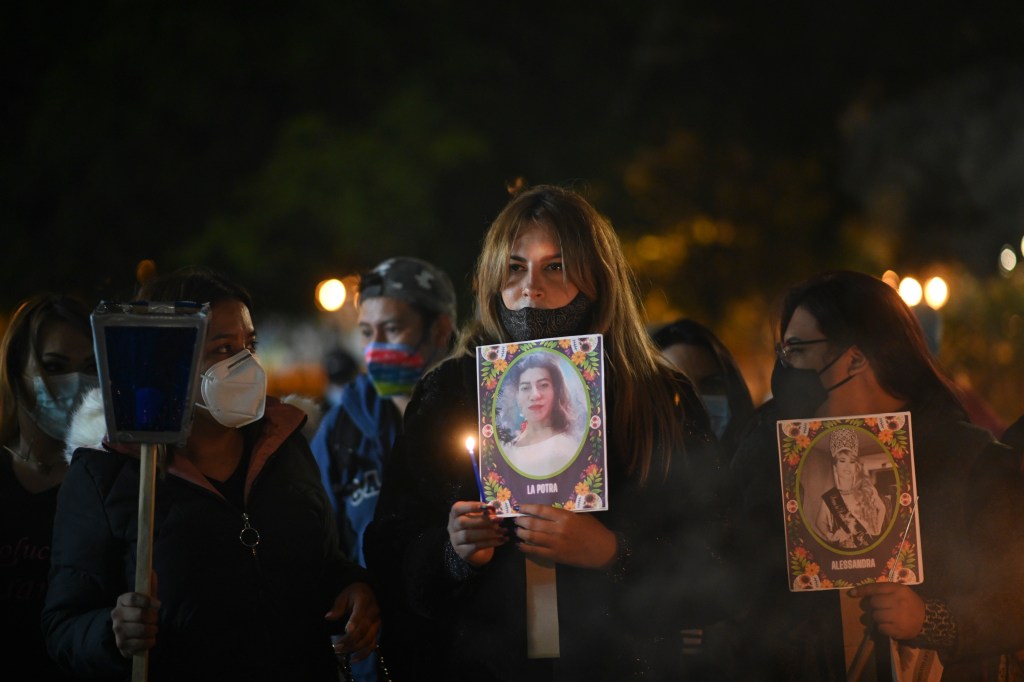
Move 2—Civil Unrest and Femicides
Since the pandemic began, gender-based and domestic violence have been on the rise, affecting thousands of women, children, and LGBTQI people. While rates of assaults, femicides, and violence against women and children have increased dramatically, calls to emergency services have decreased due to impunity, stigma, and lack of trust in authorities. Amid rising rates of violence, a wave of civil unrest reverberates across the region as protesters demand increased access to better healthcare, formal job opportunities, and employment protections. In the scenario, protests intensify following the discovery of a political scandal involving wealthy elites bribing elected officials to ignore environmental pollution and human rights violations in factories. In response to growing unrest, the government of Honduras implemented a curfew of 6 p.m. to pre-empt potential violence and sent riot police to clash with protesters.
Participants’ Responses
The second stage of the simulation prompted state actors to focus primarily on governance, norm and behavior change, and security concerns. In response to rising rates of domestic violence, delegates from Guatemala suggested the organization of a national-level human rights commission, where citizens can report potential rights violations for national investigation. Delegates from Guatemala also emphasized the need to deepen engagement with men to prevent gender-based violence (GBV). Given the faith community’s presence and proven ability to bridge gaps among stakeholders in the region, several participants pointed to the Faith-Based Coalition as uniquely suited to educate and engage men on the implications of gender-based violence. Affordable, safe childcare facilities as well as women-led community gardens were also suggested as priorities to directly address gender-based violence by creating safe spaces for women and to empower women to access formal employment.
One undercurrent through all of the recommendations was the need to build resilience to shocks and stresses in the midst of competing, urgent relief and development needs. Strengthening and building resilience within local systems and networks can help to prevent and manage those shocks and stresses before a crisis so that negative impact from a crisis do not jeopardize developmental gains. These efforts to manage shocks and stresses and promote resilience need to be more multidimensional/holistic to address the complexity of the challenge, like promoting women’s empowerment for “livelihoods resilience” and decreasing gender-based violence. For example, while efforts to empower women can and should be woven into broad programs to improve anything from food security to livelihoods resilience, there may be gaps in responding to civil unrest and gender-based violence more broadly. A more holistic approach to resilience that addresses issues of social cohesion (including women’s empowerment), social connection, and responsive institutions is essential when there are competing needs and priorities.
Advisory Panel Insights
The advisory panel highlighted the importance of investing in social capital—or the norms, networks, and shared values that hold a community together—to build resilience in the region. Social capital can be divided into three major types: bonding, bridging, and linking. “Bonding” social capital strengthens self-help social cohesion and the sharing of assets within like-minded communities. It is a critical source of stability and resilience in the face of a disaster, stress, or shock. The second type is the notion of “bridging” social capital, which involves creating metaphorical “bridges” across disconnected or, in some cases, conflicting communities. Finally, “linking” social capital connects grassroots “bridging” and “bonding” efforts to formalized resources and power.[24]
Per the panelists, evidence shows that resilience is improved when bonding, bridging, and linking are applied together. Conversely, when the three types of social capital are disjointed, resilience can be undermined; for example, investing only in “bonding” and “bridging” social capital can create a grassroots-level response that ignores longer-term or higher-level needs above the community level. Panelists also asked that participants consider targeting some investments in social capital toward families. Panelists argued that policies and programs that focus on the family unit in a coordinated, intentional way—especially via faith-based organizations—can shape the values of a new generation of Central Americans.
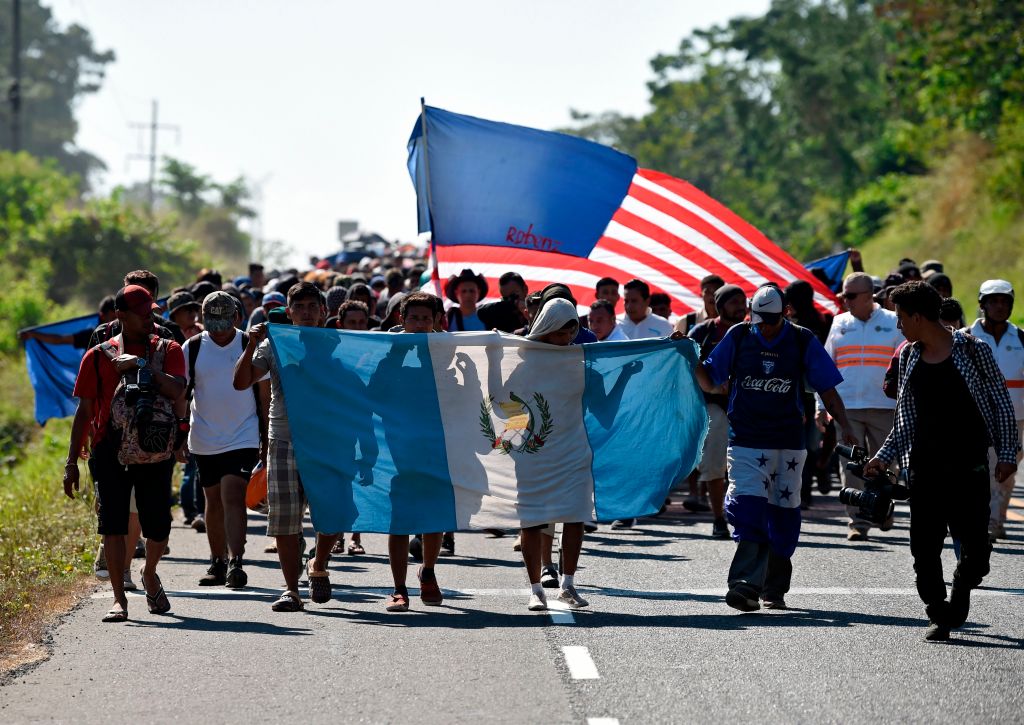
Move 3—Migration North and the Collapse of Remittances
A year after Hurricane Miranda swept through the region, President Joe Biden changes U.S. immigration laws to allow up to 125,000 refugees each fiscal year. News of the changes to immigration law inspires the organization of several migrant caravans made up of tens of thousands of Guatemalans, Salvadorans, and Hondurans. Mexican authorities, concerned with the growing number of caravans headed toward its border with Guatemala, send troops to the border to deter migration through Mexico. Meanwhile, a new study from a major international financial institution estimates that remittances to the region will gradually decline over the next decade as living costs increase, wages remain stagnant, and inflation persists. Falling remittances weaken the consumption of goods and services within the region, reduce already-depleted government revenues, and endanger thousands of small businesses. The dependence of the three economies on remittances limits deficit-financing options, forcing governments to increasingly seek out private capital markets, which tend to have higher interest rates.
Participants’ Responses
In the final move, participants sought to protect the health and safety of those migrating, while also addressing the challenges that migration poses to countries of origin, transit, and destination. To facilitate more orderly migration, delegates from the Faith-Based Coalition urged the United States and Mexico to expand temporary worker programs and develop clearer, more expedient asylum policies and processes. Delegates also urged international organizations to directly deploy COVID-19 vaccines to migrants on the ground. Given the sharp increases in irregular migration, several participants called for improved regional dialogue among governments and local actors, including faith-based actors. Throughout the simulation, the Faith-Based Coalition was noted as uniquely positioned to convene regional discussions around migration as well as other humanitarian challenges.
Acknowledging that regular and irregular migration is partly driven by a lack of economic opportunities in their home communities, participants also sought to grapple with the financing and economic challenges facing El Salvador, Guatemala, and Honduras. Delegates from the Multilateral Development Bank also emphasized the importance of regional development banks in financing locally significant, smaller-scale infrastructure projects such as dams, which tend to be less attractive to international investors but have large regional impacts. The team representing the banks also supported establishing a financing facility to seed small-scale ventures at the community level to promote private-sector growth.
The importance of internet access and mobile banking was also highlighted by several actors during the move. Delegates from the Private Sector and the Forced Migration Coalitions noted that internet access is vital to connecting people in the region with job opportunities and remittance funding. Finally, to leverage the skills and job training of returnees, the Forced Migration Coalition also recommended that development efforts target language skills and technical competencies to enable people in the region to work via the internet with international companies.
Advisory Panel Insights
To close the simulation, panelists reflected on the solutions proposed during the simulation as well as remaining challenges and opportunities left unaddressed. Panelists encouraged participants to consider the practicality of solutions created during the simulation, given the unique, often elite-centric political settlements made within the three Central American countries. These political settlements pose unique risks to building resilience at the country level and require politically savvy and adaptive approaches by partners to support solutions beyond only technical interventions. Finally, the panel encouraged participants to facilitate partnerships with a variety of stakeholders at the regional, country, and local levels to build resilience.
Recommendations and Next Steps
The FP Simulation and Virtual Dialogue produced several key takeaways and policy recommendations aimed at addressing the root causes of multidimensional fragility in the northern Central American region, across economic, environmental, social, political, and security dimensions. While most of the recommendations promoted resilience across multiple vulnerabilities, the greatest number of suggested actions addressed economic and personal vulnerability, particularly around securing livelihoods and private-sector investment. The following results and takeaways provide overarching recommendations as well as those that pertain to the three types of resilience capacity—absorptive, adaptive, and transformative—characterizing the resilience framework. The recommendations can be applied at multiple levels, including the individual and family, community, or societal levels.
Overarching Take-Aways and Recommendations
Building resilience requires the identification of complex risks. El Salvador, Guatemala, and Honduras face a constellation of compounding crises that have pushed development and humanitarian aid efforts to focus on meeting immediate needs through service delivery and economic opportunities. However, this needs-based approach has mostly failed to address complex risks and crises as well as their root causes, necessitating a new development and humanitarian approach that focuses on resilience. A resilience approach that identifies complex risks and causes and works to strengthen the absorptive, adaptive, and transformative capacities within societies is essential to helping the region move beyond current fragility traps. World Vision’s “Hope at Home: Building Resilience in Central America” framework helps to identify major multidimensional risks and vulnerabilities that have been shown to make people vulnerable to forced migration as a negative coping mechanism.25
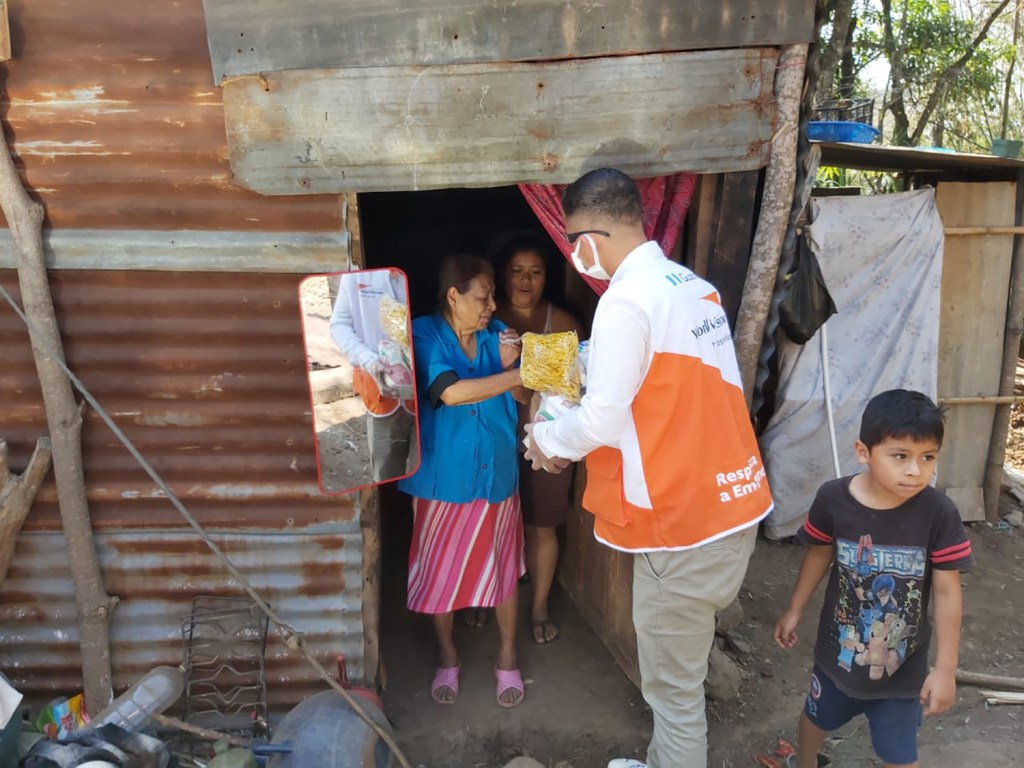
International aid efforts should prioritize the development and implementation of country platforms. Participants in the FP Simulation and Virtual Dialogue noted the shortfalls in previous aid and development efforts. Aid and technical assistance have historically been delivered to fragile states through uncoordinated and short-term projects generally in response to crises. Although the United States and the Inter-American Development Bank (IDB), as well as Mexico and the Economic Commission for Latin America and the Caribbean (CEPAL), have developed comprehensive aid approaches to the region, these approaches have, to a large degree, been unable to stem forced migration. Expanding engagement in the region requires a new approach to aid architecture, which allows the recipient country to coordinate aid efforts according to its own key development concerns. Country platforms could provide a path to do this by creating government-led coordination bodies that identify development needs and develop targeted programs that are informed and adapted by real-time data and intelligence.26
International organizations and donor countries should thus work with regional governments to develop their own country platforms to help ensure that programs are effectively aligned, and capabilities most efficiently and appropriately deployed. These efforts would establish a center of gravity for governments and partners to agree on shared priorities and mobilize resources to address governance, development, security, and economic challenges. To promote resilience and communication among stakeholders, these platforms would need to be data-driven as well as adaptive to changing environments and ongoing work on the ground. For instance, the government of Honduras developed a Reconstruction and Sustainable Development Plan to respond to the hurricanes Iota and Eta in November 2020 and the COVID-19 pandemic.27 This country-led agenda, according to Ambassador Suazo, could be the starting point to bring key stakeholders and international cooperation in country platform mechanisms for advancing country priorities in building resilience in Honduras. In Guatemala, offices like SEGEPLAN, the national office for planning domestic resources and coordination mechanisms for bilateral and multilateral coordination, can serve the role of country coordination platforms to embrace the resilience agenda in-country.
Absorptive Capacity
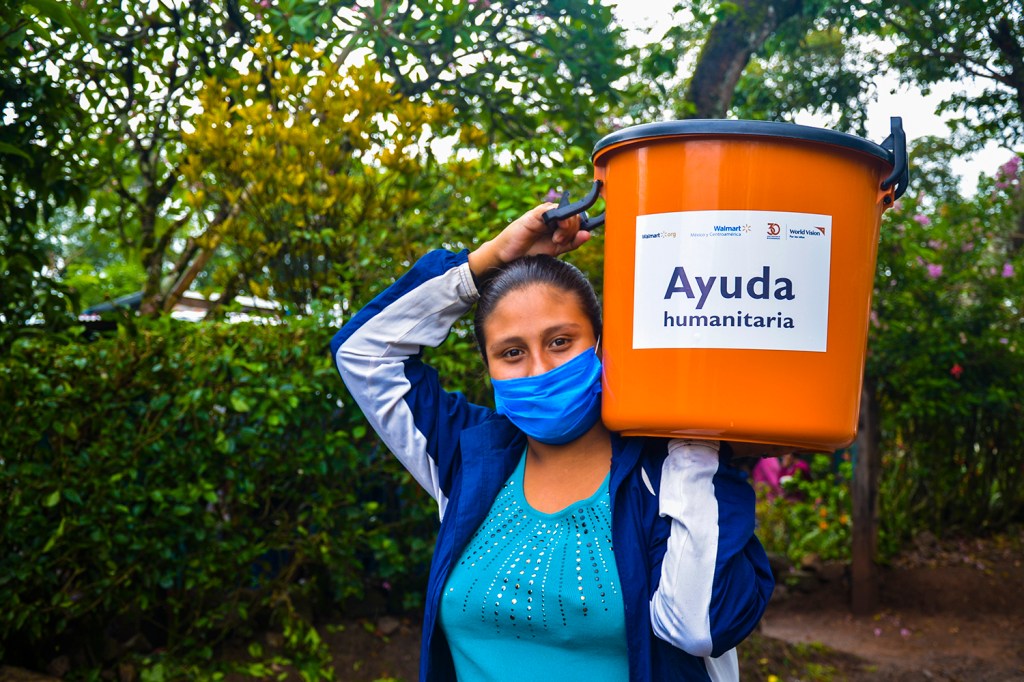
Emergency services and responses should be coordinated across stakeholders. As noted above, simulation participants recommended activating an “emergency logistics cluster,” which would bring together local stakeholders, governments, and NGOs, and maintaining the cluster during periods without disasters. Such actions could help strengthen “absorptive capacities” in communities through financing more resilient local infrastructure and improving emergency logistics coordination to better prevent, mitigate, and absorb sudden shocks. Participants suggested combating the spread of COVID-19 by setting up a vaccination program, partnering with national and local governments as well as other strategic partners to distribute information and medical supplies, and using major health-focused NGOs to advise countries on how to apply their health protocols. For migrants, participants recommended providing vaccines in the host country to curb the spread of COVID-19. Improving the absorptive and adaptive capacities of migrants—including through improved personal security for migrants along the migratory path—should be a goal for all actors, and particularly for the U.S. and Mexico.
Adaptive Capacity
Adaptive approaches are vital to better understand the underlying political, social, and economic problems that present major risks to societies, systems, and institutions. During the simulation and dialogue, participants and speakers referred to the complexity of fragility dynamics and compounding crises. This complexity is unlikely to be addressed through pre-conceived solutions and rigid types of linear development programming or governance reform. Adaptive approaches, those that continuously iterate, experiment, and learn which policy reforms and programs are working and which are not, are critical to long-term resiliency. The establishment of infrastructure for real-time data collection and information sharing among partners can help facilitate a more adaptative approach. Resilience efforts without politically informed and adaptive approaches will be short-lived and far less effective that those that employ adaptive approaches in response to sudden shocks and immediate stressors.
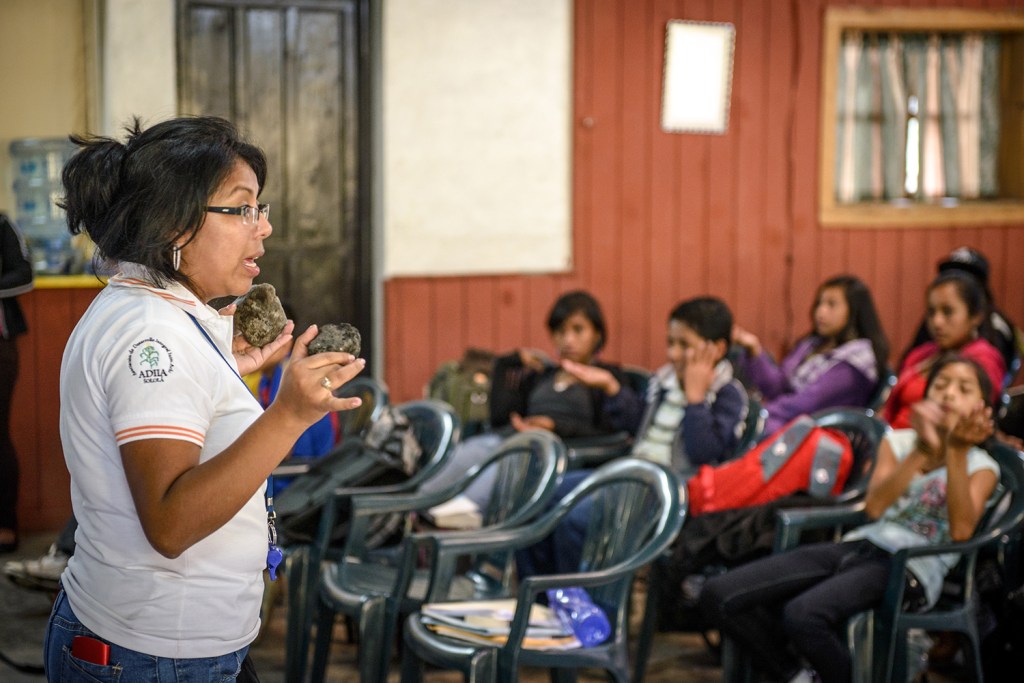
Collaboration with local partners, especially faith-based organizations, is particularly important for adaptive capacity. Virtual Dialogue speakers and Simulation participants agreed that government, private-sector, and NGO actors investing in the region must develop local partnerships to co-design and monitor interventions. Partnering with local organizations to develop and monitor interventions ensures that programs effectively meet the humanitarian and development needs of the location and allow the program to adapt over time more easily. Faith-based organizations were identified multiple times during the simulation as uniquely positioned to convene regional discussions, coordinate service provision, and facilitate social change, given the legitimacy and trust bestowed upon Catholic and Protestant Churches in the region. Given the number of governments, international organizations, NGOs, and private companies with faith offices or designates, these offices and designates could collaborate and focus on new forms of outreach and engagement with local faith groups and networks to foster resilience in the region.
Simulation participants advocated strongly for mobilizing relevant actors to improve economic and social resilience, based on their existing competencies and comparative advantages. Faith-based and youth-focused organizations were mentioned throughout the simulation as having close connections with individuals and communities.
Further cross-country security cooperation is needed. During the Simulation and Dialogue, government representatives focused primarily on threats to security and governance. In the simulation, participants representing regional governments requested aid and technical assistance to help combat threats to security, including organized crime, human and narco-trafficking, violence, and femicide. Similarly, Ambassador Luis Suazo from Honduras acknowledged in his Virtual Dialogue remarks that violence and corruption would continue in the region without international security cooperation around combating transnational criminal groups. Security cooperation between the U.S. and the region is mostly limited to the Central America Regional Security Initiative (CARSI), later recast as part of the U.S. Strategy for Engagement in Central America. The U.S. government budgeted more than $3.6 billion in aid to the Strategy, including CARSI, which funded regional law enforcement, counter-narcotics agencies, and justice systems.28 However, actual security assistance has been limited due to the U.S. government’s withholding of a portion of aid appropriated for FY2017 until Central American governments improved border security, governance, and human rights, and then reprogramming nearly all assistance to the Northern Triangle for FY18, and failing to disburse the majority of funds for FY19 and FY20.29
Simulation participants also emphasized the need for coordinated, regional action on violence, gangs, and drug trafficking issues. One pathway for fostering regional action could be to establish a Central America Criminal Intelligence Sharing Center that would promote ongoing information sharing from an intelligence and law enforcement perspective. The U.S. and Mexico could support the development and operation of such a center, potentially hosting it in Miami. Participants also highlighted the need to clarify asylum policies and evaluate expanding the U.S.’s and Mexico’s temporary migrant worker programs to facilitate orderly economic migration and reduce irregular migration.
Transformative Capacity
Cross-sectoral collaborations are necessary for growth. Building resilient infrastructure and systems to cope with future crises requires multiple actors to work with the private sector to plan, fund, and implement projects and policies. During the Virtual Dialogue and Simulation, participants underscored the role of the private sector in driving economic growth and social resilience. However, significant impediments to forming partnerships between governments and the private sector have limited private investment in the region, with combined foreign direct investment to the three countries at only $2.2 billion in 2019.30 During the Dialogue, Special Envoy Zúñiga specifically noted the need for new public-private partnership laws in Guatemala, which would significantly increase possibilities for investment within the country. Removing such impediments is vital to increasing international investment in the region. In the U.S. Strategy for Addressing the Root Causes of Migration in Central America, the United States acknowledges the private sector as an underutilized partner in the region and emphasizes the current need to leverage private-sector expertise and resources to address the root causes of migration.31
The Strategy has so far garnered 12 private-sector partners to invest in the region, including MasterCard and Microsoft.32 These partners, in particular, will be critical to bridging gaps in access to financial services and the internet, with Microsoft promising to expand broadband access to three million rural inhabitants in the region. Broadband penetration in Northern Central America falls short of regional benchmarks, with 57 percent penetration in El Salvador, 41 percent in Guatemala, and 37 percent in Honduras.33 During the simulation, participants called on the private sector to invest in broadband access, noting its potential to connect individuals with jobs, education, services, and information. Further facilitating private investments in foundational infrastructure, such as Microsoft’s pledged investment in rural broadband access, will be key to accelerating economic growth and opportunity across the region.
Communities and governments can benefit from expanding the formal economy. On average, an estimated 76 percent of workers among the three Northern Triangle countries have informal, often low-paying jobs without a fixed salary or benefits.34 These workers typically do not pay taxes and thus lack access to government pensions and credit from financial institutions. These jobs are also highly vulnerable to shocks and disasters, such as the recent COVID-19 pandemic, which forced governments to implement lockdowns that prevented many informal workers from generating income. Consequently, expanding opportunities in the formal economy is vital to ensuring that basic needs are met at the individual level and that governments are capable of financing social spending. During the simulation, participants recommended that governments seeking to promote formalization offer seed money for new ventures or temporary tax benefits for existing firms to formalize their businesses. Participants also recommended certain active labor market policies, including targeted vocational training for women, young people, would-be migrants, and returnees.
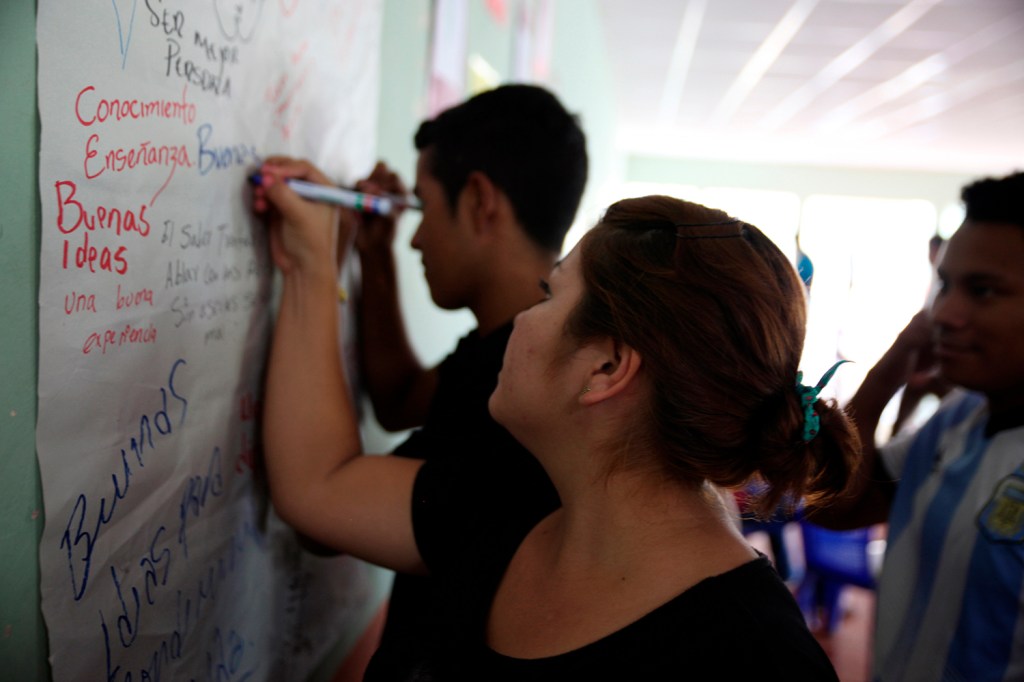
Good governance is key to effective long-term investments. Governments in the three countries have tried numerous development- or crime-focused interventions and policies to tackle governance issues, but most have failed or backslid in recent years. Simulation participants touched on the need to support good governance initiatives and to develop strong commitments and laws to combat impunity and corruption. At the Virtual Dialogue, speakers representing the U.S. government highlighted good governance as a key condition for minimizing forced migration and improving development outcomes. Governance challenges in El Salvador, Guatemala, and Honduras are a “major contributing factor to irregular migration,” according to Special Envoy Ricardo Zúñiga. In his remarks, Zúñiga stated that resilience is a topline goal for the U.S. to respond to the complex risks and crises in the region and that governance reform is a central focus for the U.S. to address these fragility dynamics, since “corruption and weak governance contribute significantly to insecurity and discourage domestic and foreign investment.” However, typical “good governance” approaches are often too technical and focus on transplanting best practices from developed or Western countries.35 Highly complex and entrenched political, institutional, social, environmental, and security fragilities in the region demand an adaptive and politically informed approach to governance reform, continuously experimenting and learning with coalitions and reformers to foster various types of resilience.
The Simulation and Virtual Dialogue brought together regional representatives and experts, many of whom had never met, to think through these complex risks and generate recommendations to build local capacity and resilience more sustainably across El Salvador, Guatemala, and Honduras—by identifying absorptive, adaptive, and transformative approaches. Each of these capacities is interconnected and mutually reinforcing and exists at multiple levels ranging from the individual to the state. By building these resilience capacities at the individual and family, community, and societal levels, individuals and communities can be strengthened and further empowered to withstand crises. Enhancing these capacities can help to ensure broad-based, long-term development and a greater capacity to withstand the shocks, stresses, and uncertainties at the root of forced migration.
Produced by:

In partnership with:


References
1 IOM (2019) Glossary on Migration. International Migration Law, No. 34. Link: https://publications. iom.int/system/files/pdf/iml_34_glossary.pdf
2 Ibid.
3 U.S. Department of Homeland Security, Office of Immigration Statistics. Annual Flow Report–Refugees and Asylees: 2019, September 2020. Link: https://www.dhs.gov/sites/default/files/publications/immigration-statistics/yearbook/2019/refugee_and_asylee_2019.pdf
4 UNHCR, Central America Refugee Crisis, Accessed August 15, 2021, Link: https://www.unrefugees.org/emergencies/central-america/
5 The Washington Post, “Huge border influx brings fears of grim summer for migrant deaths,” June 3, 2021. Link: https://www.washingtonpost.com/national-security/summer-migrant-deaths-southern-border/2021/06/03/a03d7bb8-c3a6-11eb-8c34-f8095f2dc445_story.html
6 U.S. Customs and Border Protection. U.S. Border Patrol Southwest Border Apprehensions by Sector. Department of Homeland Security. Accessed August 25, 2021. Link: https://www.cbp.gov/newsroom/stats/southwest-land-border-encounters/usbp-sw-border-apprehensions
7 Ingram, G. and Papoulidis, J. (2018) “Fragile states and the search for ‘what works.’” Brookings. Link: https://www.brookings.edu/blog/future-development/2018/11/08/fragile-states-and-the-search-for-what-works/. OECD (2020) “States of Fragility 2020.” Link: https://www.oecd.org/dac/states-of-fragility-fa5a6770-en.htm
8 IOM, WFP (2016) “Hunger Without Borders: The hidden links between Food Insecurity, Violence and Migration in the Northern Triangle of Central America.” Link: https://environmentalmigration.iom.int/hunger-without-borders-hidden-links-between-food-insecurity-violence-and-migration-northern-triangle
9 Sigelmann, L. (2019) “The Hidden Driver: Climate Change and Migration in Central America’s Northern Triangle,” Link: https://www.scribd.com/document/424634738/The-Hidden-Driver-Climate-Change-and-Migration-in-Central-America-s-Northern-Triangle
10 Arnson, C. Et al.(2011) “Organized Crime in Central America: The Northern Triangle.” Wilson Center. Link: https://www.wilsoncenter.org/sites/default/files/media/documents/publication/LAP_single_page.pdf. Fernández, D. (2010) “Policías sin ton ni son.” El Periódico, September 20, 2010. Prensa Libre (2010) “Policías se apropian de dinero durante operativo en Tikal Futura,” October 12, 2010.
11 USAID, UNDP (2021) “Homicides in the year of COVID-19: Central America and the Dominican Republic. ” Link: https://infosegura.org/en/2021/01/21/homicides-in-the-year-of-covid-19-central-america-and-the-dominican-republic-2/
12 Wolfe, D. (2020) “Northern Triangle: Terrifying to live in, dangerous to leave.” Link: https://www.worldvision. ca/stories/child-protection/northern-triangle
13 Bozmoski, M.F., Hernández, C., Rubio, R. and Sadurní, D. (2021) “Combatting corruption in the Northern Triangle: Prioritizing a whole-of-society approach.” Atlantic Council. Link: https://www.atlanticcouncil.org/ in-depth-research-reports/issue-brief/combatting-corruption-in-the-northern-triangle-prioritizing-a-whole-of-society-approach/#Introduction. Wolfe, D. (2020) “Northern Triangle: Terrifying to live in, dangerous to leave.” Link: https://www.worldvision.ca/stories/child-protection/northern-triangle
14 Transparency International (2021) “Corruption Perceptions Index.” Link: https://www.transparency.org/en/cpi/2020/index/nzl
15 Cheatham, A. (2021) “Central America’s Turbulent Northern Triangle.” Council on Foreign Relations. Link: https://www.cfr.org/backgrounder/central-americas-turbulent-northern-triangle
16 World Bank. (2021). GDP per capita (current US$): Latin America and the Caribbean. World Bank Group. Link: https://data.worldbank.org/indicator/NY.GDP.PCAP.CD?locations=ZJ
17 Cheatham, A. (2021) “Central America’s Turbulent Northern Triangle.” Council on Foreign Relations. Link: https://www.cfr.org/backgrounder/central-americas-turbulent-northern-triangle
18 The World Bank. “Personal remittances, received (% of GDP) – Guatemala, El Salvador, Honduras.” Accessed August 25, 2021. Link: https://data.worldbank.org/indicator/BX.TRF.PWKR.DT.GD.ZS?locations=GT-SV-HN
19 Noe-Bustamante, L. (Aug. 2020). “Amid COVID-19, remittances to some Latin American nations fell sharply in April, then rebounded.” Pew Research Center. Link: https://www.pewresearch.org/fact-tank/2020/08/31/amid-covid-19-remittances-to-some-latin-american-nations-fell-sharply-in-april-then-rebounded/.
20 Alonso-Gamo, P., Goretti, M., and Ocker, I. (Dec. 2020). “When it Rains it Pours: Pandemic and Natural Disasters Challenge Central America’s Economies.” Link: https://www.imf.org/en/News/Articles/2020/12/15/na121720when-it-rains-it-pours-pandemic-and-natural-disasters-challenge-central-americas-economies.
21 ECLAC. (2021). Financing for development in the era of COVID-19 and beyond: Priorities of Latin America and the Caribbean in relation to the financing for development global policy agenda. No. 10 Special Report COVID-19 Link: https://repositorio.cepal.org/bitstream/handle/11362/46711/1/S2100063_en.pdf.
22 Inter-American Institute for Cooperation on Agriculture (2021) “The Northern Triangle of Central America is a Concern that will be raised at The UN Food Systems Summit.” Link: https://iica.int/en/press/news/northern-triangle-central-america-concern-will-be-raised-un-food-systems-summit
23 World Food Programme. (June 2021). Guatemala Country Brief. World Food Programme. Link: https://docs.wfp.org/api/documents/WFP-0000130458/download/?_ga=2.147575927.1719115431.1629219610-1877471204.1629219610
24 OECD (2018) “States of Fragility 2018.” Link: https://www.oecd-ilibrary.org/development/states-of-fragility-2018_9789264302075-en?itemId=/content/publication/9789264302075-en&_csp_=f05718374d7db8492bca650b 796707e5&itemIGO=oecd&itemContentType=book.
25 World Vision (2021) “Hope at Home: Building Resilience in Central America.” Link: https://wvusstatic.com/PDFs/Central-America-Resilience-Briefing.pdf.
26 OECD (2020) “States of Fragility 2020.” Link: https://www.oecd.org/dac/states-of-fragility-fa5a6770-en.htm. Papoulidis, J. (2020) “Country Platforms in Fragile States: A New Path for Development Cooperation.” [Blog] Global Delivery Initiative.
27 The Government of Honduras. (2020) Plan de Reconstrucción y Desarrollo Sostenible de Honduras. Link: http://www.prds.hn/
28 Meyer, P. (November 2019). U.S. Strategy for Engagement in Central America: Policy Issues for Congress. Congressional Research Service. Link: https://fas.org/sgp/crs/row/R44812.pdf
29 Ibid.
30 World Bank. (2019). “Foreign direct investment, net inflows (BoP, current US$) – Guatemala, El Salvador, Honduras.” World Bank Group. Link: https://data.worldbank.org/indicator/BX.KLT.DINV.CD.WD?locations=GT-SV-HN
31 The National Security Council. (July 2021). U.S. Strategy for Addressing the Root Causes of Migration in Central America. The White House. Link: https://www.whitehouse.gov/wp-content/uploads/2021/07/Root-Causes-Strategy.pdf
32 The White House. (May 2021). “FACT SHEET: Vice President Harris Launches a Call to Action to the Private Sector to Deepen Investment in the Northern Triangle.” The White House Briefing Room. Link: https://www.whitehouse.gov/briefing-room/statements-releases/2021/05/27/fact-sheet-vice-president-harris-launches-a-call-to-action-to-the-private-sector-to-deepen-investment-in-the-northern-triangle/
33 Smith, B. (May 2021). “Answering the call: Microsoft’s support for VP Harris’ initiative to promote economic opportunity in Central America.” Microsoft. Link: https://blogs.microsoft.com/on-the-issues/2021/05/27/harris-central-america-digital-skills-call-to-action/
34 ILOSTAT (July 2021). “Share of informal employment by country (in percent), latest year.” International Labour Organisation. Link: https://ilostat.ilo.org/topics/informality/#
35 World Bank Group (2017) “Social Service Delivery in Violent Contexts: Achieving Results Against the Odds.” Link: https://documents1.worldbank.org/curated/en/343141497021595501/pdf/116038-WP-PUBLIC-184p-SocialServiceDeliveryinViolentContextsFinal.pdf. World Bank Group (2017) “World Development Report 2017: Governance and the Law.” World Bank Group Flagship Report. Link: https://www.worldbank.org/en/publication/wdr2017
